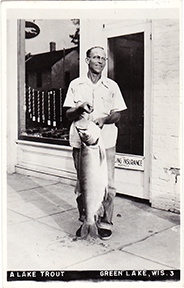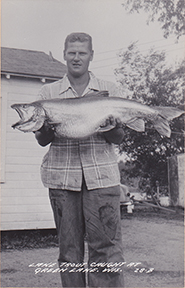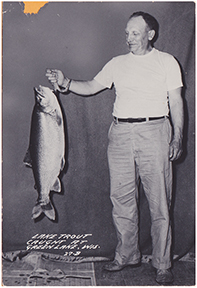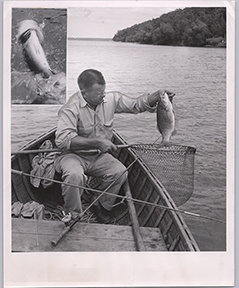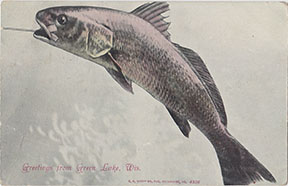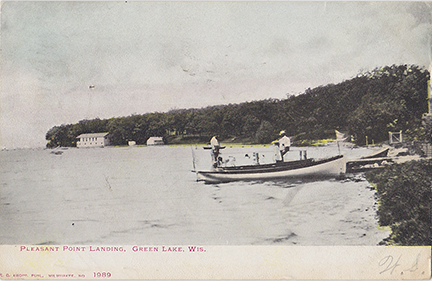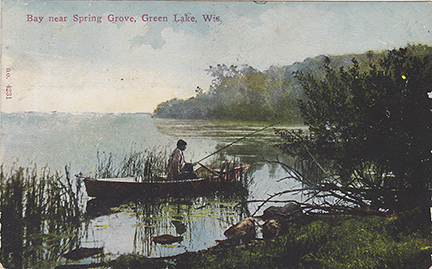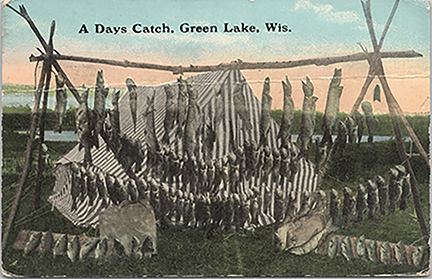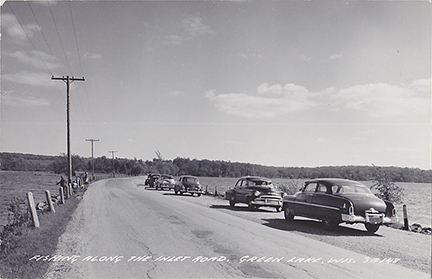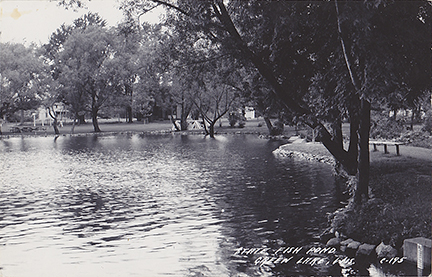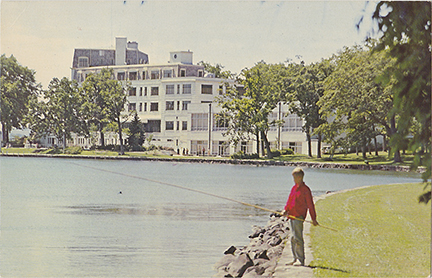Fishing
Fish & Fishing on Green Lake
Below is a condensed version of the story of lake trout in Green Lake that appeared in Field & Stream Magazine, in February 1958.
The first lake trout were released in Green Lake in the summer of 1886. The adult fish were seined in Lake Superior and transported to Ripon in ice-packed railway tank cars. They were transported to Green Lake from Ripon by horse & buggy. William Lucas, who had a palatial home on Sandstone Bluff and no interest in fishing, picked up the tab.
Throughout the years, thousands of lakers and laker fry were released in Green Lake. This continued until 1944, when the Wisconsin Conservation Department stopped stocking the trout completely. “It was like flushing them down the drain,” one official said, “because none of those fish were ever caught with hook & line.”
In 1952 the local fishermen noticed that an Army Officer, Major Turnbull, was catching lakers almost daily. Not only was he catching lots of lakers, he was catching jumbo sized lake trout. Major Turnbull always fished alone, and whenever he noticed anyone watching him, he would stop fishing. On several occasions when another fisherman edged close to him, he would cut his line. All the local fishermen were sure that he was using some sort of illegal rig, chemical or electronic device to draw the fish to his line. Only one thing was certain, he trolled slowly by rowing his boat because the law prohibited trolling with a motor in Wisconsin.
A local fisherman was fishing in an area where Major Turnbull had been, and he pulled up a length of line that was attached to a tissue-thin spoon-type lure of the kind that was used in New York’s Finger Lakes. It would “work” when trolled slowly, whereas heavier spoons would hang motionless.
Almost overnight laker fishing gave the dozing village of Green Lake a new lease on life and twice as many summer visitors. Sportsmen poured in from all over the midwest and half a million dollars of new motels and cottages were built to accommodate the newcomers.
Vernon Hacker a local marine biologist, became very interested in the lake trout of Green Lake. He thought that it was unusual that no one was catching any small lake trout. He concluded that all the large lake trout that were being caught were the result of the past planting. In 1952 he discovered that the trout were spawning in the Sugarloaf bar area, but it did not appear that any of the spawn were creating any new fish. Then in 1954, a test box placed on the bottom came up with a clue. The box contained a few fresh eggs, and mud puppies with bellies full of fertilized eggs.
A local contractor, Augie Kopplin, joined forces with Vernon Hacker to come up with a plan to deal with the mud puppy problem. Augie Kopplin raised the money and enlisted the help of the local Rotary club to dump 210 tons of crushed granite onto a 6,000 square foot area of ice over the Sugarloaf bar. In March of 1956 a volunteer diver from the Midwest Amphibians Club out of Kenosha came up with 4 newly hatched laker fry. He stated that there were bushels of eggs all over the newly created spawning grounds. And that is how the lake trout fishery on Green Lake was created and turned into a healthy and bountiful tourist attraction.
Many other people helped Vernon Hacker to develop the trout fishery in Green lake, they are all mentioned in the full article. If you want a copy of the story, drop me a line and I will send you a PDF of the story.
Click on any picture to see a detailed page showing both sides of the postcard.
